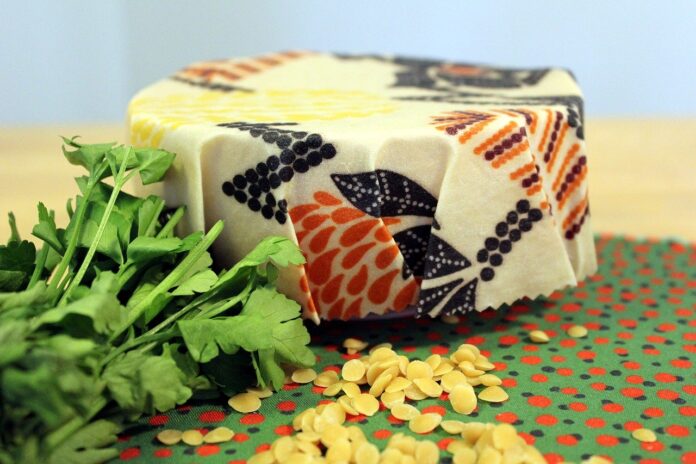Conservation practices can be both big and small. Helping the environment is sometimes as simple as replacing something disposable with something reusable and compostable at the end of its useful life.
U.S. landfills received 27 million tons of plastic in 2018, according to the Environmental Protection Agency. That was about 18.5% of all municipal solid waste landfilled that year. The amount of plastic being landfilled has nearly doubled since 1990.
Getting plastic pollution under control is a daunting task as the production of disposable plastic products continues to increase. According to National Geographic, plastic production jumped from 2.3 million tons in 1950 to 448 million tons in 2015. And production is on track to double by 2050.
Furthermore, the shelf lives of some products have been extended, taking at least 400 years to break down, as a result of additives used in manufacturing to make plastics stronger, more flexible and more durable.
Reusable food wraps
Making and using reusable food wraps is one small way every individual can help cut down on plastic waste. Reusable warps can replace plastic wrap to wrap food individually and keep food from drying out or to cover containers before refrigerating. They are easy to make and can be composted at the end of their useful life.
Wraps made from fabric soaked in beeswax mixtures are a popular option. They are flexible and tacky enough to cling to dishes and their beeswax coating seals in moisture and prevents sauces and juices from soaking into the fabric. After use, they can be easily rinsed under cool water and reused.
Making reusable food wraps
Oil and resin have to be added to beeswax to create the coating mixture because beeswax is too brittle and lacks stickiness at room temperature on its own. Oil gives the coating flexibility and resin gives it better cling.
Jojoba and coconut oil and copal and pine resin are common choices. However, wraps made with coconut oil will smell like coconut and tend to leave a slightly greasy film on whatever they touch. Additionally, wraps made with copal resin tend to be stickier than wraps made with pine resin when they cool.
Supplies
- Cooking pot
- Heatproof glass bowl to set on top of pot
- Wooden spoon
- Clean wide paint brush
- Baking sheets
- Parchment paper
- Organic cotton fabric (quilting cottons are the ideal weight)
- Pinking shears
Ingredients (will cover about 2 yards of fabric)
- 8 tablespoons beeswax pastilles
- 4 tablespoons copal resin
- 4 tablespoons jojoba oil
Steps
- Cut fabric into different-sized squares and rectangles with pinking shears — pinking will reduce fraying. Consider the sizes you need to cover your containers and the typical size of a piece of plastic wrap you use to individually wrap food.
- Line your baking sheets with parchment paper and place your fabric squares on top.
- Set up a double boiler with your pan and bowl to melt your ingredients together. Make sure to use clean equipment, but not your favorites as the resin will be difficult to remove completely. You might be able to find used utensils at a local thrift store.
- Fill your pot with water so that it touches just below the bottom of the bowl and bring it to a simmer.
- Put the beeswax, resin and oil into the bowl and melt them together completely. It may take a while for all of the ingredients to melt together.
- Stir occasionally to blend the ingredients.
- Preheat your oven to 300F while your beeswax mixture is melting.
- Set up a place to hang your wraps to cool. If you try to cool them on a flat surface, they will stick. You could set up a small clothesline or use a rack.
- When the beeswax mixture is fully melted, use the paintbrush to spread the coating on the fabric pieces as evenly as possible. Avoid heavy drips and areas that are completely bare.
- Place the baking sheets in the oven for 1 minute to bond the coating to the fibers of the fabric.
- Remove the baking sheets from the oven and use your paintbrush to smooth the coating if needed.
- Peel the wraps off the parchment paper and hang them up to cool.
- Excess beeswax mixture can be poured into small molds or left in the bowl and saved for future use.
- Once your wraps are cool they can be folded up and stored.













